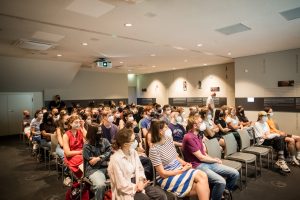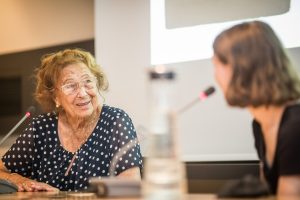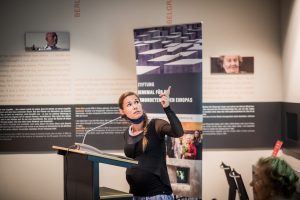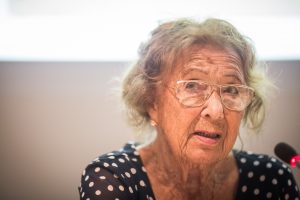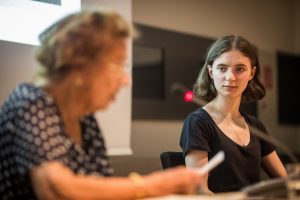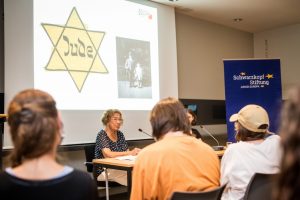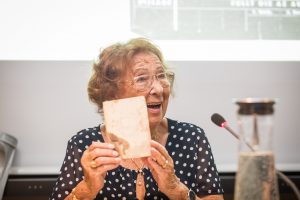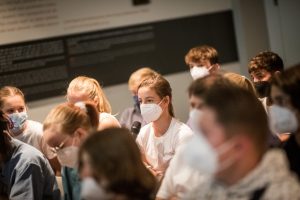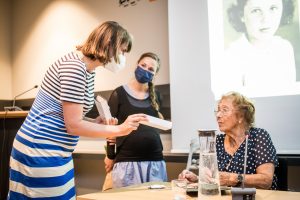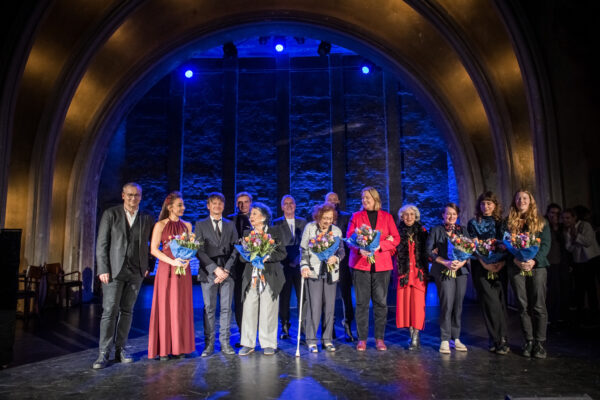Only recently, in the course of the relaunch of the new foundation website https://www.verfolgung-von-jugendlichen-im-ns.de/ , a biography of Ingeburg Geißler created by pupils was published. The website portrays young people from all over Europe who were persecuted and sometimes even murdered by the National Socialists for »racial«, political, religious and other reasons between 1933 and 1945. One of these young people is Ingeburg Geißler, who was born on 8 July 1932 in Erfurt, Thuringia, the daughter of a gardener and a commercial employee.
In an interview with Yola-Marie Fanroth, from the Schwarzkopf Foundation Young Europe, Ingeburg reported on her childhood: her father is Jewish, her mother Is a Christian, but Ingeburg is not raised religiously. In order to protect mother and child from coercive measures by the National Socialist rulers, the parents divorce. In 1938 his father emigrated to Shanghai. At that time, Ingeburg lived with relatives near Erfurt. Her aunt enables her to live an almost normal everyday life despite the increasing discrimination. But in January 1945, at the age of twelve, Ingeburg was deported to the Theresienstadt ghetto without any other relatives. On the way there, she writes a postcard that she throws off the train. It says, “It’s all a lie, I’m not coming back.” The other people on the train tell her that it is not going to a re-education camp, as promised by the Gestapo, but to the gas chambers. “They all knew more than I did. I had no clue about Theresienstadt.” In Theresienstadt, Ingeburg spends five months without her family. None of the family members knew during this time whether she was still alive. “There was hardly anything to eat, no medicines, it was a very cold winter and the worst was the vermin.” In addition, the fear of being murdered was a constant companion.
In May 1945, as one of about 100 children, she was liberated by the Red Army from Theresienstadt. After returning to her hometown of Erfurt, she graduated from high school with the help of her mother, later studied law and moved to East Berlin.
For years, she has been reporting on her experiences as a historical witness and is promoting tolerance and civil courage.
After numerous students had asked Ingeburg Geißler questions, Yola-Marie Fanroth emphasized what a privilege it was to belong to a generation that was still allowed to experience historical witnesses. And so Ingeburg Geißler also concluded that it was very important to her to warn young people in particular of the danger of racism and the exclusion of supposedly “others” and instead to ask them to always reach out, not to look away and to build a bridge: “Especially here young people can and must get involved!”
__________
As in the past, the encounter with historical witnesses was organised together with the Schwarzkopf Foundation young Europe .




